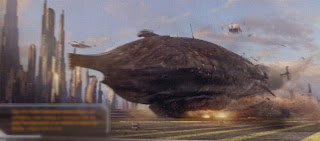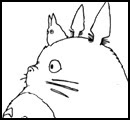And this is only the potential audience. It rules out people that wouldn’t even come near the movie (film snobs, hockey moms, etc.).
For years, film critics have used the phrase “like a video game” to describe a movie they think is too artificial, colorful, and manic. This is as unfair as saying a movie is “like an album” and leaving it at that. A whole art form can’t be shorthand for crappiness. Maybe it’s a generational thing. Roger Ebert famously claims that video games are not "high art" and never will be.
The phrase “like a video game” is this era’s version of “like MTV.” When used in a review, both cases require some elaboration. 1) Which video games or aspects of MTV?* 2) Why is the movie actually not good?
The parts of “Speed Racer” most like a video game are, admittedly, like a sweet-looking video game. Taking inspiration from the anti-gravity game series “Wipeout,” the cars in the film have tenuous traction with the ground. This allows them to flip around, power slide, and jump over other racers at will. Nausea-inducing drops and twists in the well-defined tracks seem designed with this in mind. Further linking “Speed Racer” with a game are the weapons integrated into the Mach 5, which are introduced by their concomitant steering wheel buttons; the steering wheel is a glorified console controller.
The final lap of the final race of "Speed Racer" will hopefully be inspiring for future games. The faster Speed drives, the trippier the visuals become. By the finish line, he's skimming through a swirling seizure of red and white diamonds.
The rest of the movie is truly terrible though—like a novel.
*Okay, it’s well-documented—on the Web and in everybody-of-a-certain-age’s mind—what’s wrong with MTV. This mention is specifically referring to the quick cuts, outré fashion, and narrative haziness of 80’s music videos and the supposed infiltration of said elements into *respectable* films.
BTW, Defamer fondly remembers an era of MTV that most people already complain about for the lack of “M.” It’s gotten worse?








